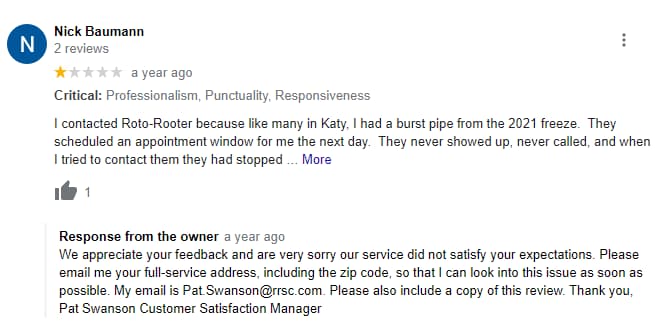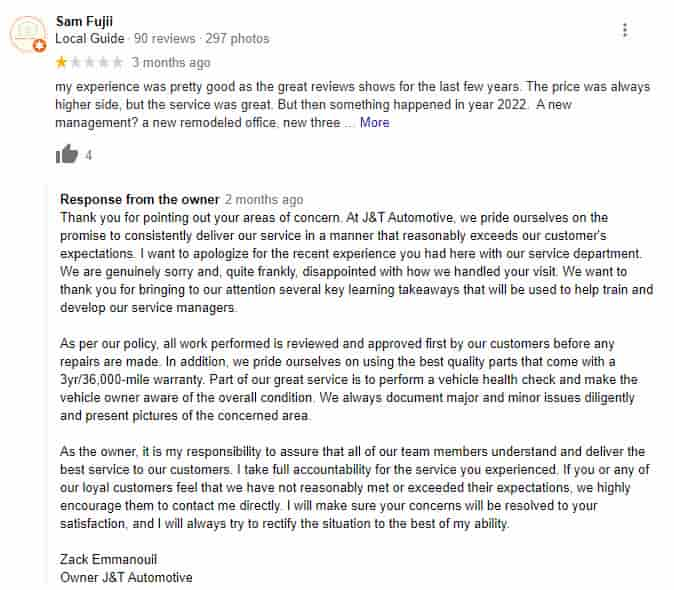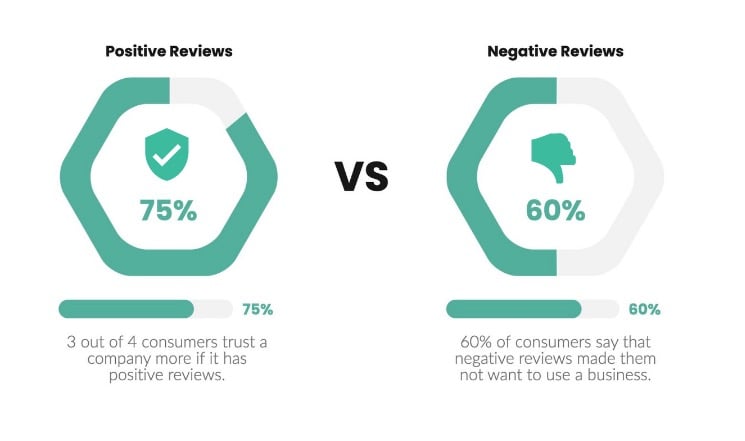How to Fix Bad Online Reviews

Online reviews can make all the difference to your business. Figure this — 89% of consumers read reviews online as a part of their buying process. Bad reviews here can spoil your business reputation, so it’s important to know how to fix bad reviews.
No, the answer doesn’t lie in censoring these negative reviews while keeping all the positive ones untouched. This will cause deep distrust among the consumers for your brand. About 62% of consumers say they won’t purchase from brands that censor reviews.
So, how do you fix bad reviews to ensure that your brand reputation remains top-notch online?
The answer lies in online review management.
Let’s learn how you can use this strategy to fix poor reviews of your business online.
7 Best Tactics to Fix Bad Reviews
Here are the most helpful tips you can incorporate into your online review management strategy to fix bad reviews and boost your brand reputation.
1. Use Gated Reviews
One of the best ways of managing bad reviews for your business is by leveraging a gated review system.
The gated review system is essentially a two-step system.
- In the first step, you create a form and ask the customer if they had a positive or negative experience with your business.
- If it’s a positive experience, you can ask them to write a review.
However, in the case of a negative review, you can instantly address their issue to improve their experience. This can significantly reduce the number of people who will go on to write a bad review for your business.
Note: Not all review platforms appreciate gated reviews, though, many prefer you don’t use them and allow anyone to leave a review.
2. Write Quick Replies and Resolutions
The same study by Trustpilot also found that 64% of consumers would prefer to purchase from a company that’s responsive than a company that seems perfect.
What does this mean for you?
Bad reviews aren’t necessarily bad for your brand. They allow you to correct course and improve your product offerings or services.
The key lies in how quickly you respond to the customers and solve their problems. It’s something that others would note too. You can leverage a platform like Semrush to check if all your reviews have received replies. A detailed Semrush review can help you check these replies quickly.
That way, you can stay on top and ensure a quick response.
So, what should be your plan of action on seeing a bad review?
Here’s a step-by-step process:
- Acknowledge the issue quickly and assure them of a solution.
- Write a custom response to each issue.
- Take the conversation to another channel.
- Work to resolve the issue at the earliest.
For example, note how the customer satisfaction manager here has addressed the issue quickly and moved the topic to emails.

3. Removal of Reviews Violating ToS
This particular tactic of managing bad reviews only works for specific cases depending on the website on which a particular review has been published.
There may be certain negative reviews that could be violating the terms of service (ToS) of that particular platform, such as Yelp or Google. You can start by filtering all the reviews to find the negative ones.
Once that’s done, you can analyze each review to figure out if it’s violating the ToS of the platform. If it is, you can report it to the platform and have it taken down.
4. Follow-Up After Problem Resolution
As mentioned above, you need to work towards solving the issues that your customers have been facing. It’s also essential to address these problems as quickly as possible to ensure maximum customer engagement and satisfaction.
But what should you do once the problem has been solved?
It won’t change the bad review, right?
That’s why following up on those issues is essential after you’ve resolved the problem. You can approach your customers and ask them if they’re satisfied with your resolution.
If they are, you can request them to update their review to include information about how their problem was resolved.
5. Maintain a Positive Tone
You must maintain a good and polite tone even when it comes to dealing with bad reviews. How you respond to these bad reviews will make all the difference in how others perceive your business.
A brand that doesn’t maintain a polite tone in its response to customers will come across as one that doesn’t care about them.
And this, in turn, can impact your business negatively. On the other hand, a polite tone can go a long way in easing your customers’ concerns and can be the first step in fixing your bad reviews.
Some of the things you should keep in mind to maintain a polite tone are:
- Sympathize with your customers.
- Assure them that you’ll solve their issues.
- Be apologetic for any mistakes from your end.
For instance, note how the below response to a negative Google review is so apologetic.

6. Make Changes to Business Practices
Based on the issues that your customers have raised through the bad reviews, you can figure out the problems they’re facing with your business.
By analyzing your reviews, you’ll figure out some common points where your customers are facing challenges, leading them to write these negative reviews.
If you can rectify those aspects, you’ll automatically plug the bad reviews as the customer experience would improve.
7. Encourage Customers to Leave Positive Reviews
While you may be reducing the number of bad reviews, it’s also important to have a healthy flow of positive reviews coming in.
So whenever you notice a customer having a good experience with your brand, you can motivate them to write a review about it. For instance, if you get reviews on Amazon, your potential customers will see how many other customers have used your product, too.
You could also incentivize them for it by giving them a discount or some freebies. You could leverage video animation services to create animated explainer videos about the same to engage your customers and get them to write reviews for you.
But why is it so important to have positive reviews?
A large number of positive reviews can blunt the impact that a few bad reviews can have on your business revenue. 75% of consumers trust a business with more positive reviews.
 Final Thoughts
Final Thoughts
Bad reviews can negatively impact your business, as customers might become more hesitant to try out your products or services.
However, you can reduce their impact and even leverage them to improve your products and services. The key lies in responding to your customers and solving their problems at the earliest.
So start addressing your customers’ issues and begin your journey of fixing bad reviews.
 Final Thoughts
Final Thoughts